Globalocal, exhibition Ain Shams University Faculty of Specific Education, Cairo, Apr 13 - 18 |
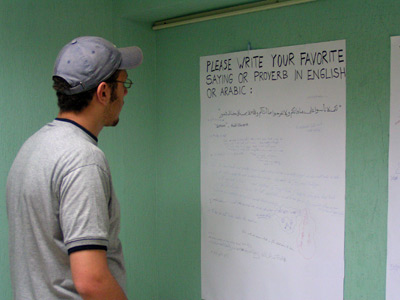 |
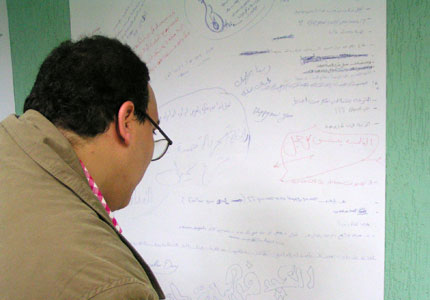 |
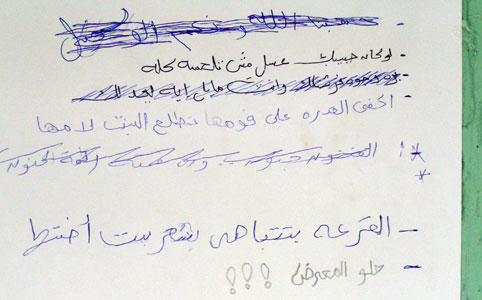 |
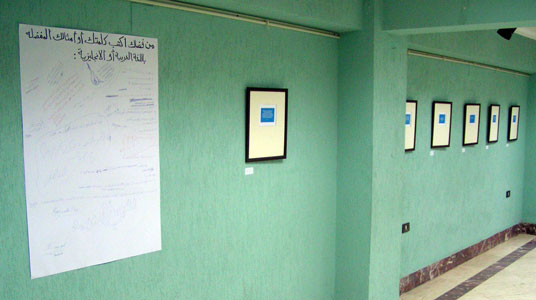 |
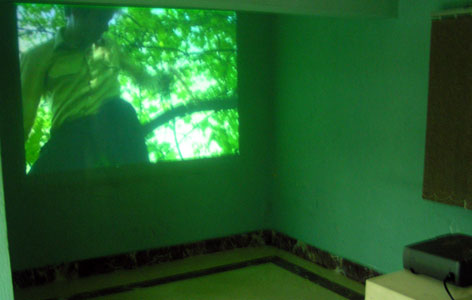 |
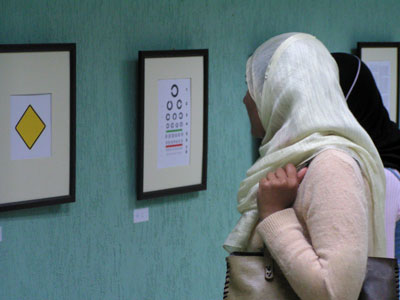 |
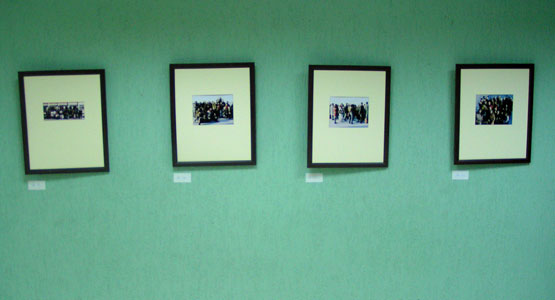 |
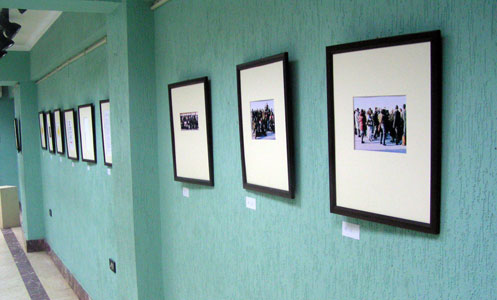 |
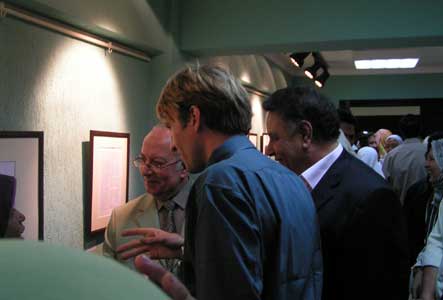 |
|||||||
|
Video Works
|
Traffic signs (#1-5) / Sight check (#6)
|
Selfportrait as a Group (#9-12)
|
Exhibition Text (#8) / Art Education
|
||||||||||||
Following framed pieces are on view:
#1+2 No Colon, No Conclusions! is the title of a print in two parts taking up every day aesthetics of traffic signs. The work is querying how our modernised societies would deal with decision making processes or cultural understanding: on the basis of a logical system that is ruled by constraints and short sighted conclusions; by clear cut and distinct rules that even predominate the exceptions. But every explanation has its limits as every logic system has its indomitable elements and paradoxes. Art is often understood as a realm of their revival.
#3-5 are continuing the imagery of traffic signs, slightly changing its content. #3 is referring to a common warning sign - watch out - but blurrs the exclamation mark that is supposed to give a clear and explicit warning whereas #5 - bare of any content - is entirely hiding what it is warning about - watch out but what for? Especially westerns societies have a hard time to deal with insecurities installing safety systems for everything and whatsoever. #4 looks like a traditional information sign but changes the font of the depicted question mark. Nowadays graphic design is highly developed so that even a slight change of a font changes meaning.
#6 Sightcheck is a c-print with blurry letters. Imitating an optometrical test - adapted to the arabic context - this image traps people to believe for a moment they might experience a visual defect. Playing with the attention of the viewer the eye chart turns into an installation about perception, awareness and the difference between "looking" and "seeing", a core task of art. We only see what we know!
#7 If one watches this picture carefully he/she will see a bearly noticeable word glimmering beyond its surface: Parasite. Ever since I started to make exhibitions I place at least 1 parasite within my exhibited pieces because as a matter of fact: there is always a parasite among us. But each parasite is different due to the fact that they live by continually being undiscovered and hiding themselves. My parasites do the same: They adjust to their context, taking up the color of the wall or - in this case - the shape of the passpartout. Art is a parasitic activity means: It is a barely noticealbe activity, surprising and little, and yet successfully reaching its audience at times.
#8 entitled Exhibition Text describes the exhibited pieces. As a text this piece serves basically as a directory of the exhibited art works adding little stories and comments to them. The Exhibiton Text may be necessary to understand the work of art or it may not. Either way: There is always a weird relationship between art as an object and the explanation of it, its intention and its audience. #8 materializes this very point by turning the text into a piece of art itself.
#9-12 Selfportraits are very common among artists since hundreds of years. The socalled series Selfportrait as a Group follows this tradition but puts into its center not only a single individuum but the human person as a social being, with its friends, colleagues and professional contacts, short: as a group. I'm doing this photographic picture since a couple of years honoring the value of friendship and the essential influence that people are taking in each others life. Of course every year my personal social context is a little different from the previous – as is my life and as are my friends and colleagues. #9 marks the beginning of the project in the year 2001, Vienna. #10-12 are the from Dec 2005, New York.
#13-18 "Silent prayers". Every culture comprises big reservoirs of sayings and proverbs. They often help us to struggle with events that ask either for certain attitudes or deeper understanding. I started to collect them by asking people to tell me their favorite saying and the short story of it: when and how the phrase first entered his/her life. The exhibited pieces only instigate further participation. The audience is encouraged to communicate their favorite sayings on a provided paper board. Art as I understand it to be is not only about showing: it is also about sharing.
Adopting public sayings by carrying them through every-day's live is personalizing socio-cultural heritage. Given that "ideology" - news-reel tells the daily stories of some of the most prominent fatal effects of ideological thinking - is based upon unreflected internalization of public opinions or believe systems, "silent prayers" are putting the focus on the importance of personal experience. Their title advertises that religion should rather give up on manipulating social behavior, abandon the public arena and return to its core realm: informing and educating spirituality. Wouldn't it be desirable when human behavior is rather put in question than religious belonging, i.e. no matter whether one is Hindu, Muslim, Christian, Jew, or whatsover?